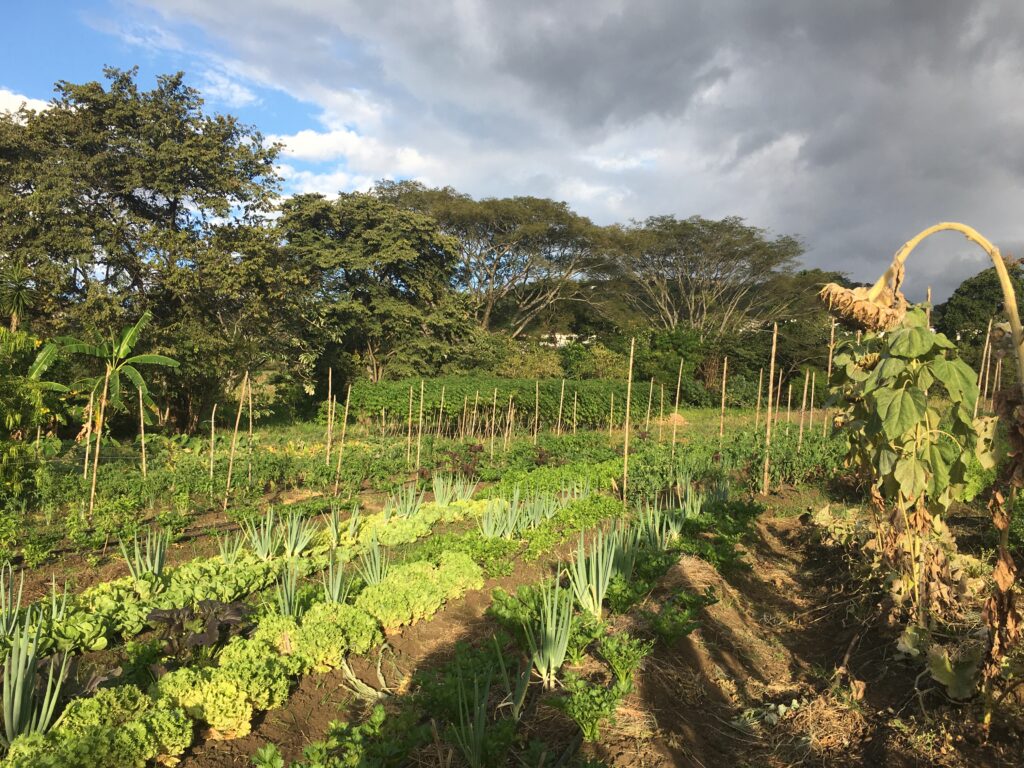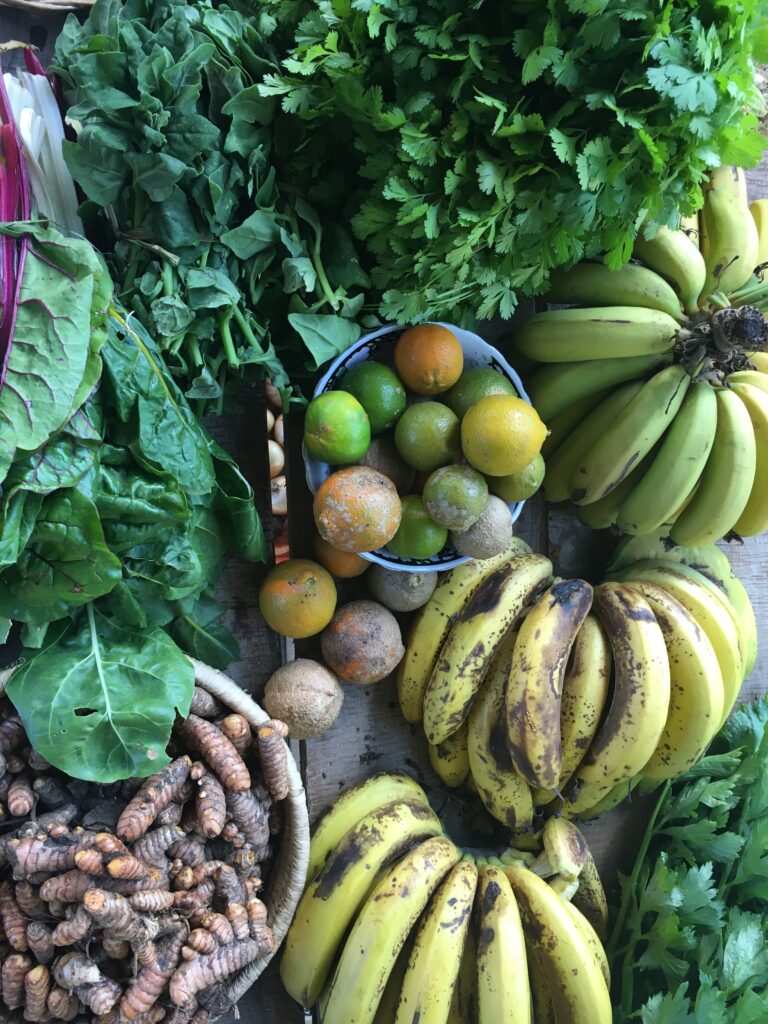After unsuccessful attempts to get her family’s farming business to adopt sustainable practices, Paola founded her own independent project, Hortelanas.
Over the next 10 years, she would go on to scale her project and become an influential advocate for regenerative farming in her country’s agricultural sector. Paola left Costa Rica to enrol in a Master’s course at Edinburgh University. She recently completed a research paper on pricing in the carbon markets and livestock farming.
In the interview we discuss:
- Green entrepreneurship
- Regenerative farming
- The carbon markets
Green entrepreneurship
What were the motivations for starting the regenerative farming project?
Paola – My interest in organic farming came from investigating the processes involved in poultry farming. I was curious because I didn’t like the taste of supermarket eggs. I discovered that there were a lot of hormones, antibiotics and bad practices that go into their production. From there, I went down a bit of a rabbit hole and realised it was the same with other fresh produce. So, I wanted to take control of what I was consuming and I started planting for this purpose. Quickly I understood this was a common wish within my community, in fact many local restaurateurs talked about wanting really fresh and organic produce.
During this time, my family, who are involved in agro-business, were setting up a project to export fruits. I wanted our business to explore organic farming and we had discussions as a family group, sadly it was deemed too risky. This was also a motivating factor for me to start my own project. I felt it was important to test the financial viability of regenerative agriculture.
What were the barriers to scaling the project?
Paola – The demand from my restaurant clients dictated how I scaled the business. These restaurants were interested from the beginning of the project. The chefs really got behind the farm and started to request that I produce certain crops. Because my project was such a lean, micro business I was able to be flexible, so I could personalise what I was doing. When you are an entrepreneur you can plan for things but often the market and your clients, especially in a niche market, will take you somewhere else.
Generally scaling is harder for regenerative farms. This is because conventional farms are easier to manage in the sense that they resemble a factory with clear inputs and outputs. The first hectare is the same as the rest. So the farmer can streamline and mechanise the fertilising and harvesting processes. On a regenerative farm you have a variety of crops with different needs.
Did you have to rely mostly on self-education or were there any organisations you could get support from?
Paola – At the beginning a lot of it was self-taught but I did get support from certain key players. Where I犀利士 come from and where I was farming is an agricultural town. So there is a state-sponsored program where the government sends a farming expert to do rounds of all the local farms. He inspects crops and offers advice on best practice. I got on the radar of this organisation and I met with this expert once a week. However, the problem was he had been taught more conventional farming techniques and focussed on using chemical pesticides. So, I had to work with him to investigate natural and organic methods to deal with the issues I had.
Also, I enrolled in lots of courses on subjects like composting and microorganisms. I connected with other farming entrepreneurs in the country and we exchanged our ideas and experience. It was a constant process of learning new things and reading as much as I could. I also participated in various collaborations with two local universities. I received students on several occasions for field trips to show them my methods of production and talk with them about routes to market for my produce.

Did you receive any financial assistance from any local or national organisations?
Paola – There is an investment bank in Costa Rica that has low interest rate loans for farmers that are doing sustainable projects. Also, there are resources from environmental agencies for people who want to transform their practices away from conventional methods.
However, bureaucracy is a challenge, it takes a really long time to be able to get access to these resources. For example you have to complete many administrative tasks, basically you have put a lot of energy into it and in my experience it was difficult to find the time. I barely had time to run the farm and to deliver for my clients, especially in the beginning. I couldn’t justify sitting in a government office for a whole day to hand over documents, you had to do this because the process wasn’t digital. For small businesses it is harder to take advantage of these policies.
Did your project have a positive influence on the local farming sector and your family’s business?
Paola – Yes, I remained on the board of directors for my family’s business. It took me some time to change their perception about regenerative farming. Initially they were concerned about production methods, yields and ultimately profitability. However, after a few years of running my farm the board came round to my thinking. The concept of my farm and the greater control I had of my soil inputs started to be attractive to them. But applying my methods on a large-scale wasn’t easy. I was working with a small farm and my business was more agile. Despite the difficulties of transitioning to sustainable farming, the board has agreed to fund a pilot project. The project will focus on promoting biodiversity of crops and using only biological inputs for fertilisation and pest control.
In 2019, after a few years of running my farm the board of directors came round to my thinking. The concept of my farm and the greater control I had of my sales channel started to be attractive to them.But applying my concepts to the larger project wasn’t easy. I was working with a small farm and my business was more agile. Despite the difficulties of transitioning to sustainable farming, the board has agreed to fund a pilot project twice as large as the farm I was running. The project will focus on promoting biodiversity of crops and using only biological inputs for fertilization and pest control.
Reflecting on your entrepreneurial journey, what are the key lessons you learned?
The main lesson for me was how important scale is when you are starting a business. In the initial stage, you want to stay flexible and lean, because you need to adapt to consumer needs. However, you cannot linger in this stage too long because you are working with limited resources and you run the risk of burning out and failing on quality. There is a point where you have certain assurances from the market that your product or service works and you need to be able to invest in your business’ growth. It is a tricky hurdle to get through, because there is external pressure for you to grow, but you are not making enough money to finance any significant expansion. Every time I needed to hire someone for a new position, I felt unsure of whether the business was going to be able to generate enough income to sustain the position in the long-term. Every time I was surprised that the position not only paid for itself by contributing to income growth, but it would allow me to focus on other things where I could add more value.


Regenerative farming
What regenerative farming practices did you implement on your farm?
Paola – I urge anyone who works in agriculture to research about the topic because there are so many interesting things you can do. But for me the general rule of thumb is to focus on your soil and protect and enrich it as much as possible. In practical terms, this means you should use compost, inoculate with microorganisms, use mulch, protect fields from water runoff and plant a diverse range of crops.
Local farmers were shocked that I didn’t have any big expenses for treating my soil. Most of the products that I used to improve my soil came from the farm itself. Occasionally I had to buy some minerals or chicken manure but generally most of what I needed was created in-house. This is the great thing about regenerative farming, you do not need to acquire all of your inputs from external sources. With the Ukraine conflict, there has been a disruption to the supply chain of lots of agri-chemicals, so it’s a clear problem to depend on external suppliers for key inputs to your production.
How did you grow your consumer base and were they attracted to the concept of regenerative farming?
Paola – I would say the demand for my produce was related to quality, not sustainability. During the pandemic the focus did shift to sustainability. I had a huge spike in orders throughout the pandemic which I think was driven by people wanting to know their farmer and wanting to secure their food source. For the most part, however, what sold was quality. The majority of clients, like my restaurant clients, were buying from me because my produce was high quality, sustainability was an added bonus.
In terms of the growth of my customer base, I didn’t do too much marketing, it simply grew by word of mouth. In my country the restaurant industry is small and you get a lot of turnover of staff in kitchens, so chefs and other kitchen workers would suggest me as a supplier when they moved to new restaurants. Also I was making deliveries personally and if there was any problem I dealt with it face to face. Through this hands-on approach more customers were familiar with me and I could get feedback on how to improve the service.


Can you talk more about the reaction of your consumers during the pandemic?
Paola – The pandemic changed people’s perspectives in a tremendous way. They started to understand why regenerative farming and local consumption was important, it really clicked for them. I never had as much work as I did during the pandemic. I had lots of new customers coming in every day.
I believe the pandemic disrupted how people think, it touched on people’s really basic and fundamental instinct about the possibility of not having access to food. We live in a society that is used to convenience so people won’t inconvenience themselves too much. But I do think there has been a permanent shift in consumption habits and people are more conscious about where their produce is coming from. I hope this is not wishful thinking on my part.
Carbon Markets
Tell us about why you chose to research the carbon markets and green financing
Paola – The biggest motivation behind this research is understanding that there has been a huge loss in tropical forests driven by the agricultural sector. The dilemma is that most of these rainforests are in developing countries and these are countries that need sustained economic growth. So this is the context of my thesis, nature is being lost at an alarming rate in the tropics, but these countries have a right to provide jobs and decent livelihoods for the people. Nature has a much higher value than what our society accounts for in economic terms, but destructive environmental practices are more profitable than conservation or regeneration.
In a way my current research reflects my past experiences of trying to influence family members to embrace organic agriculture. I’m trying to get people to shift their mindset. In the end it is about profitability, people are going to do the things that make them money. I think that carbon markets or payment for ecosystem services are a way of achieving a large-scale transition towards more sustainable practices in the land use sector. There are other ecosystem services that need to be valued, such as biodiversity, but carbon and carbon reductions have entered the mainstream. It is great that carbon reduction has finally become mainstream because it’s a starting point for protecting the rainforests and livelihoods.
What is the state of deforestation in Costa Rica?
Paola – In 1996 Costa Rica passed an environmental law that prohibits land use changes in forested areas, so deforestation in Costa Rica is not as concerning as it is in the rest of the continent.
Costa Rica is an outlier and a special place for many reasons; the protection of the environment is one of them. We have seen the introduction of very wise policies and the whole of society is pretty aware of the importance of natural resources. I chose to focus my research on Costa Rica because we have problems besides deforestation, primarily soil degradation. Large mono-crop plantations and the livestock sector are drivers of soil degradation in the country and in the region.
What were the main findings of your research and are you optimistic about the carbon markets?
Paola – Pricing of carbon credits will vary depending on the project type and by location. For my research I compared my findings to global average prices for the land use sector. In terms of the most optimistic scenario for incentivising the transformation of grazing land to silvopasture, the price of credits would need to increase around 130% from current levels. In the least optimistic scenario they need to be around 230% higher than current levels.
Can we stimulate the price of credits?
Paola – We need to understand that this is a multi-stakeholder issue. The situation needs to be addressed by governments, the private sector and also by consumers, who need to push corporations to offset their carbon footprint responsibly, by investing in high quality credits.
I believe in the principles of the voluntary carbon market because I think the private sector is more efficient in allocating funds. But the action of investors and companies needs to come hand in hand with regulation. For example, government policy is important for transferring knowledge. I’m talking about bridging the current knowledge gap like I had to with my community. How does a rural farmer living in Central America, or anywhere in the world, know that they can obtain financing from the international markets.
Also, these rural farmers need to be taught about sustainable agriculture on a technical level. The government could create educational courses or a public official could act as an intermediary between the farmers and traders. Regulation should also provide guidance and incentives for investors to channel funds into high quality projects. Verifying agencies can play a key role in establishing quality standards for projects.






